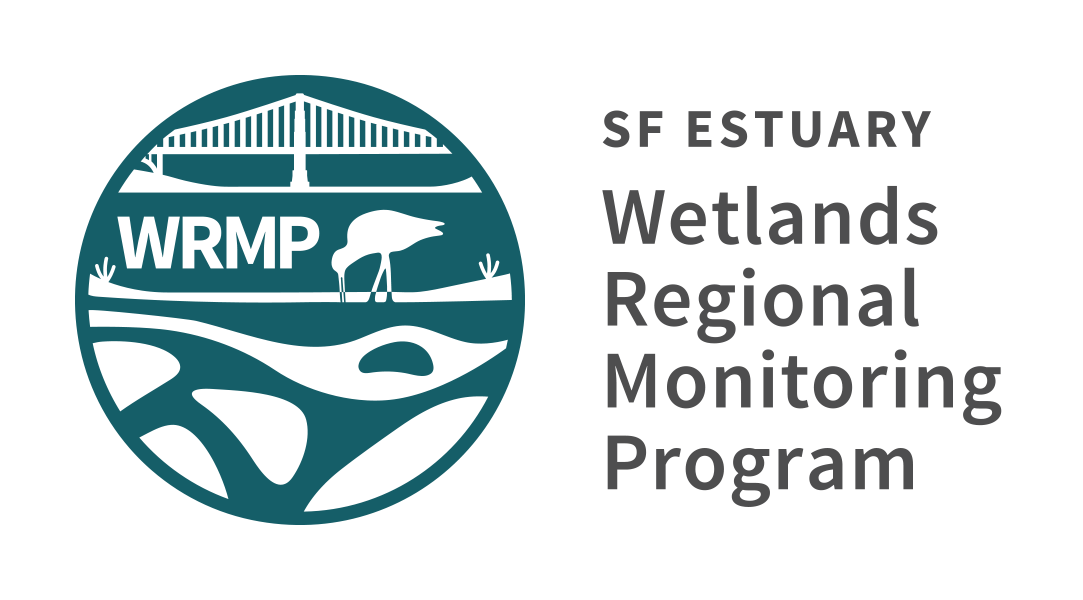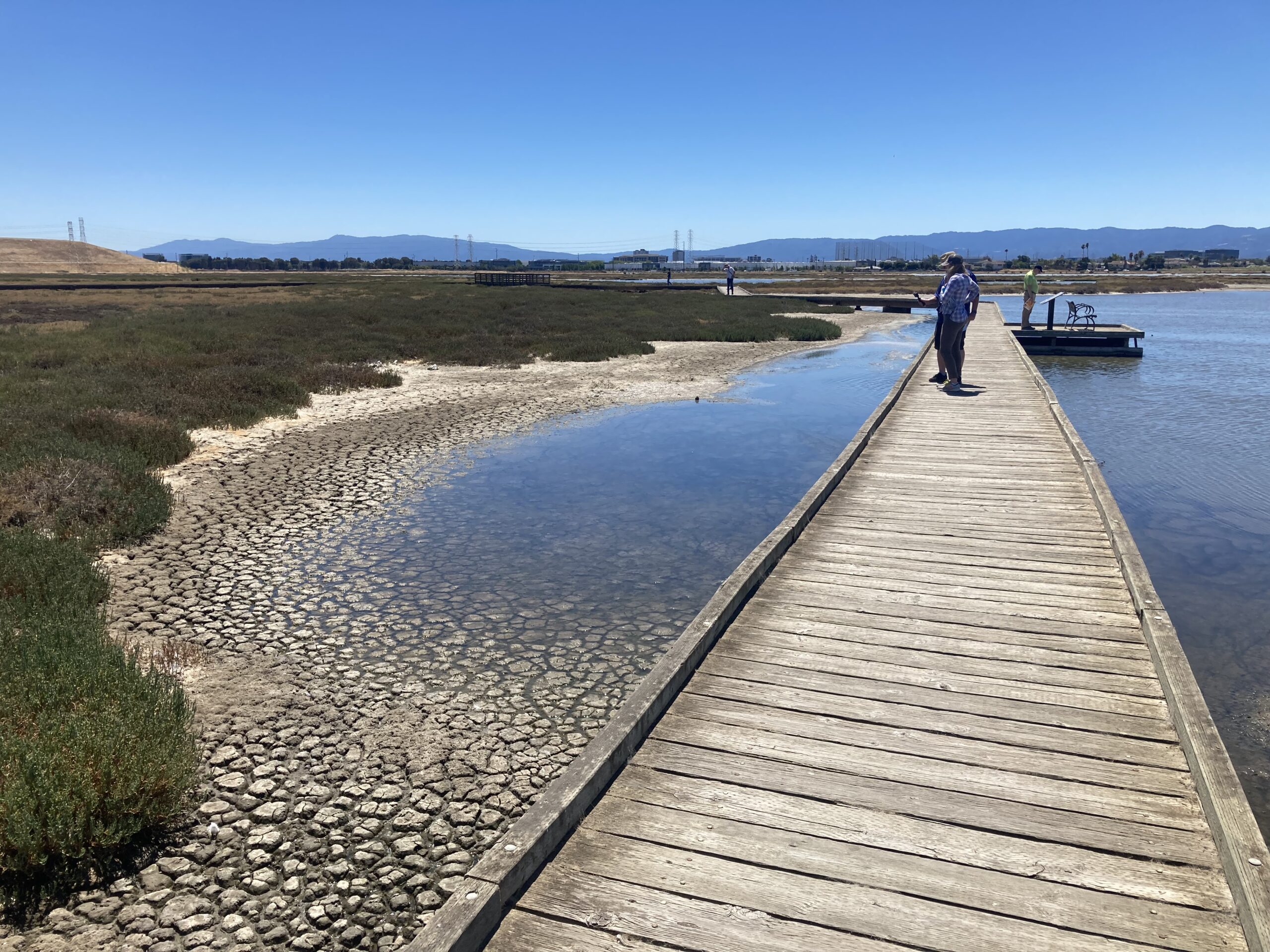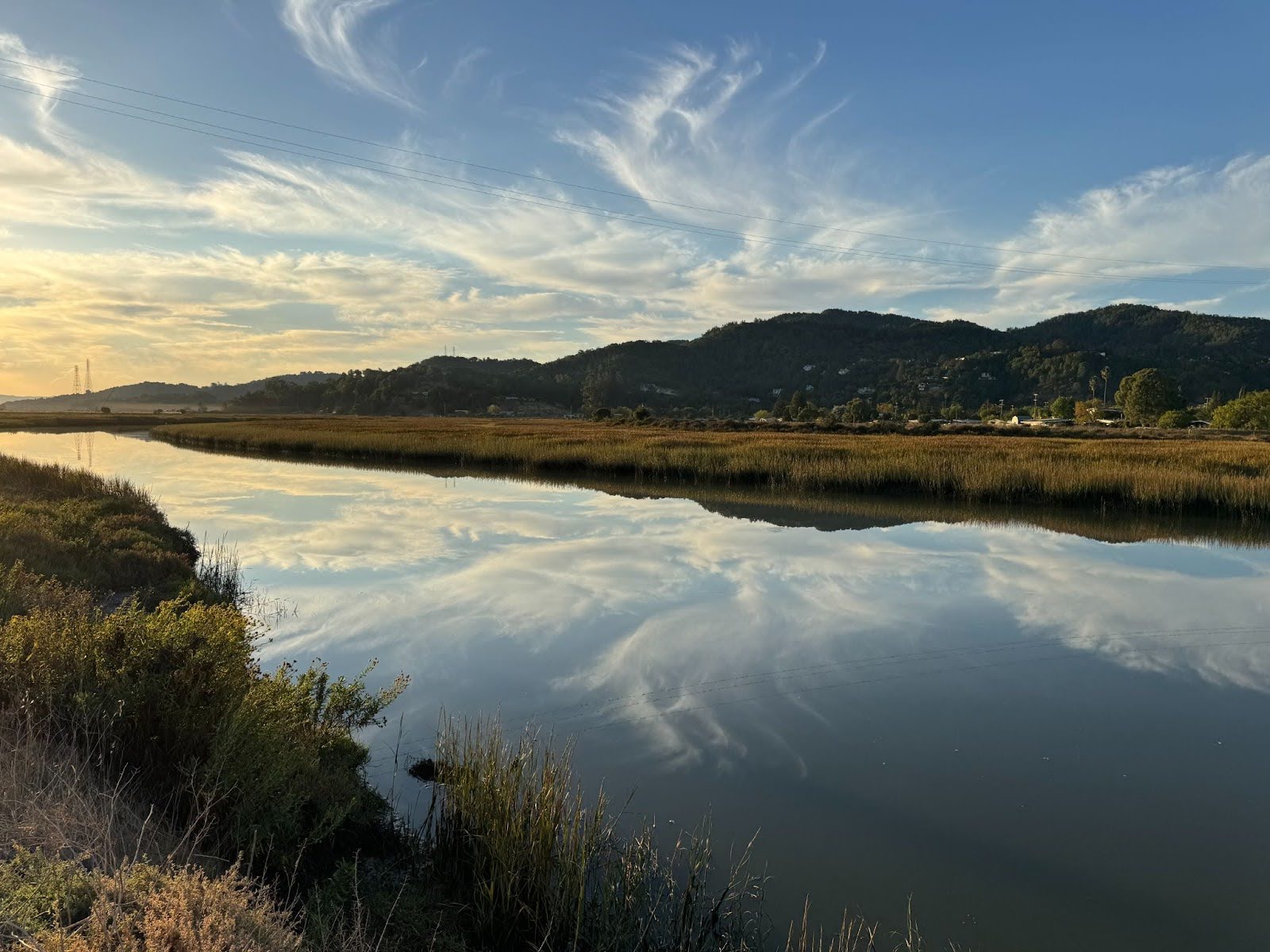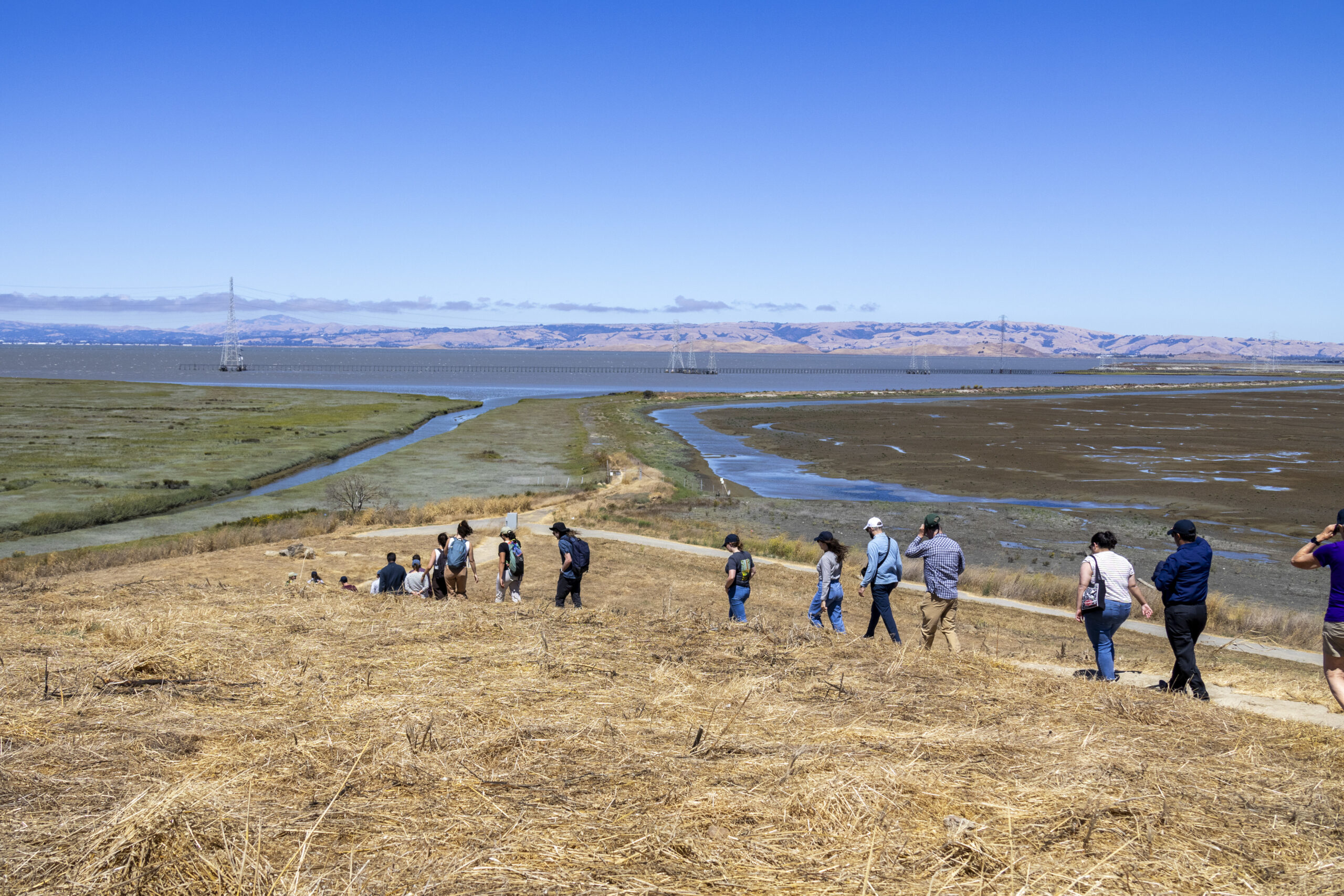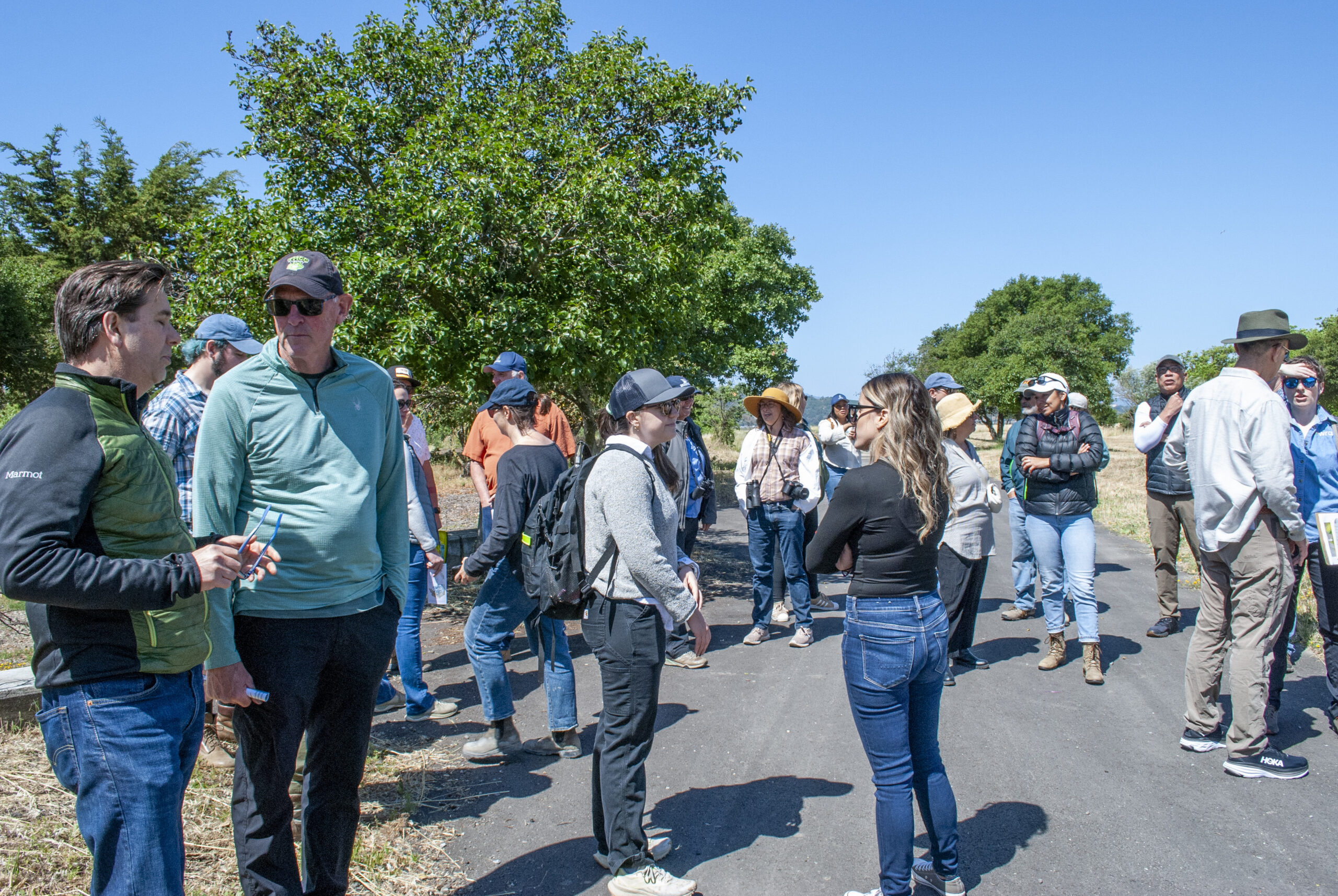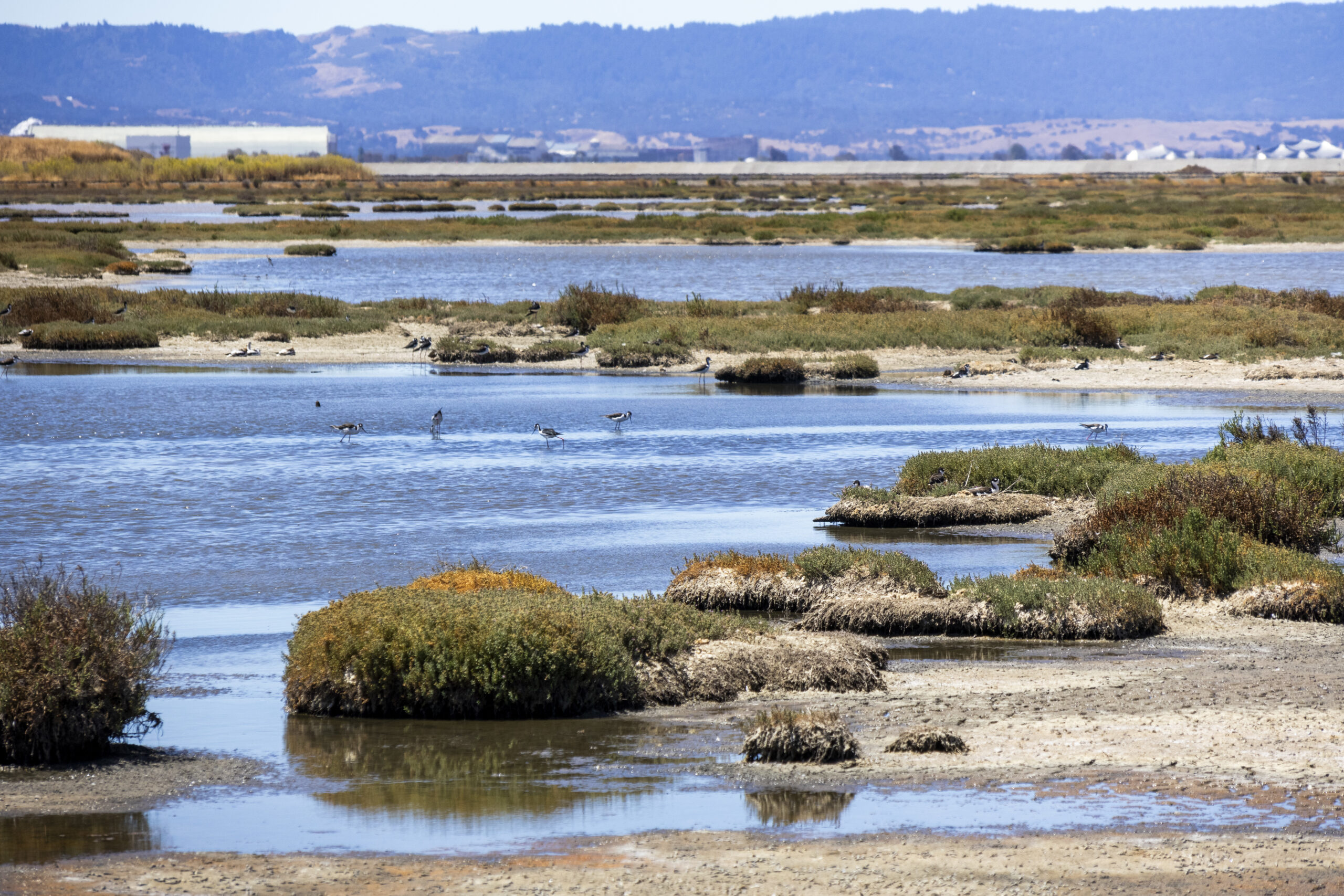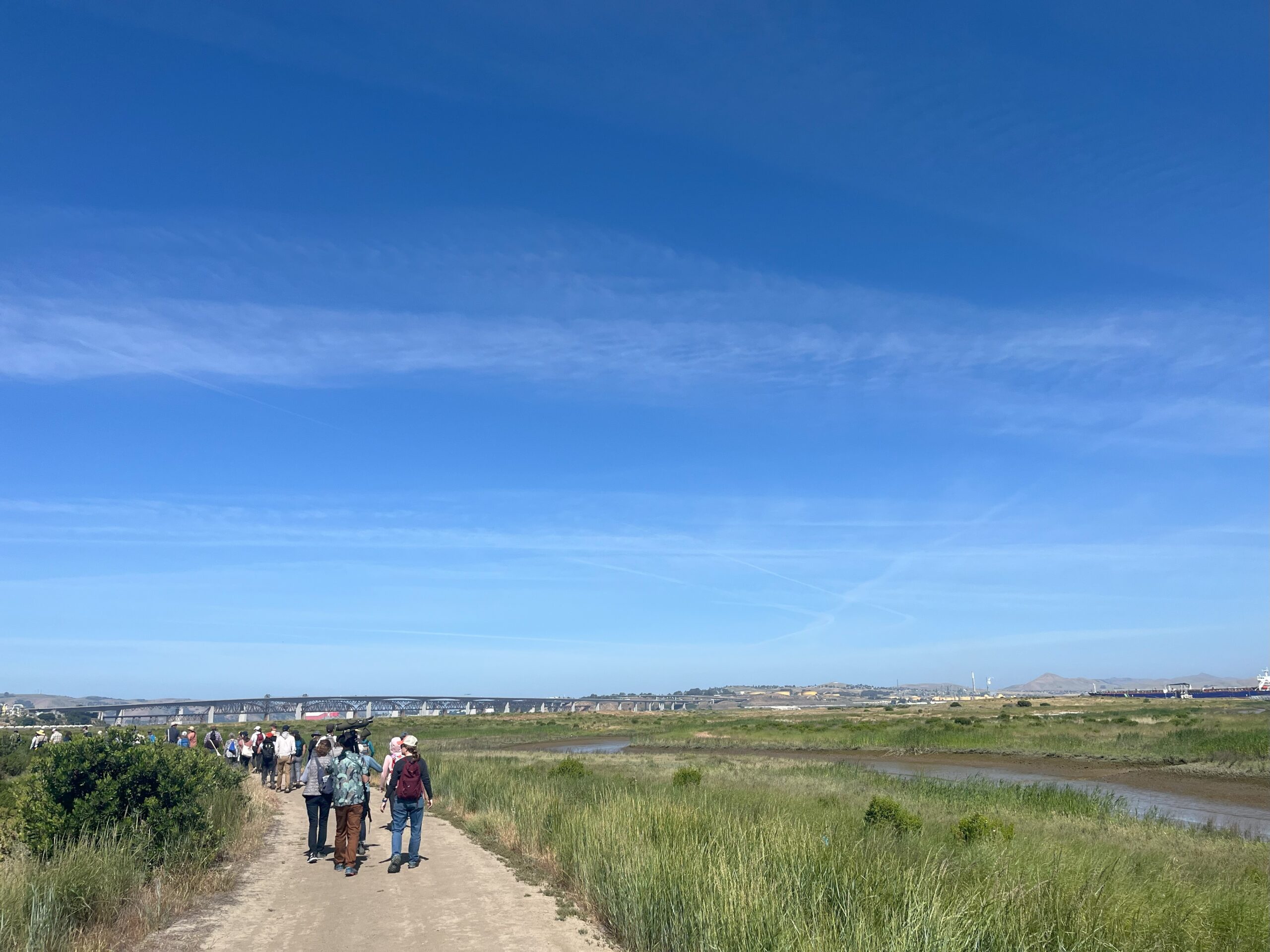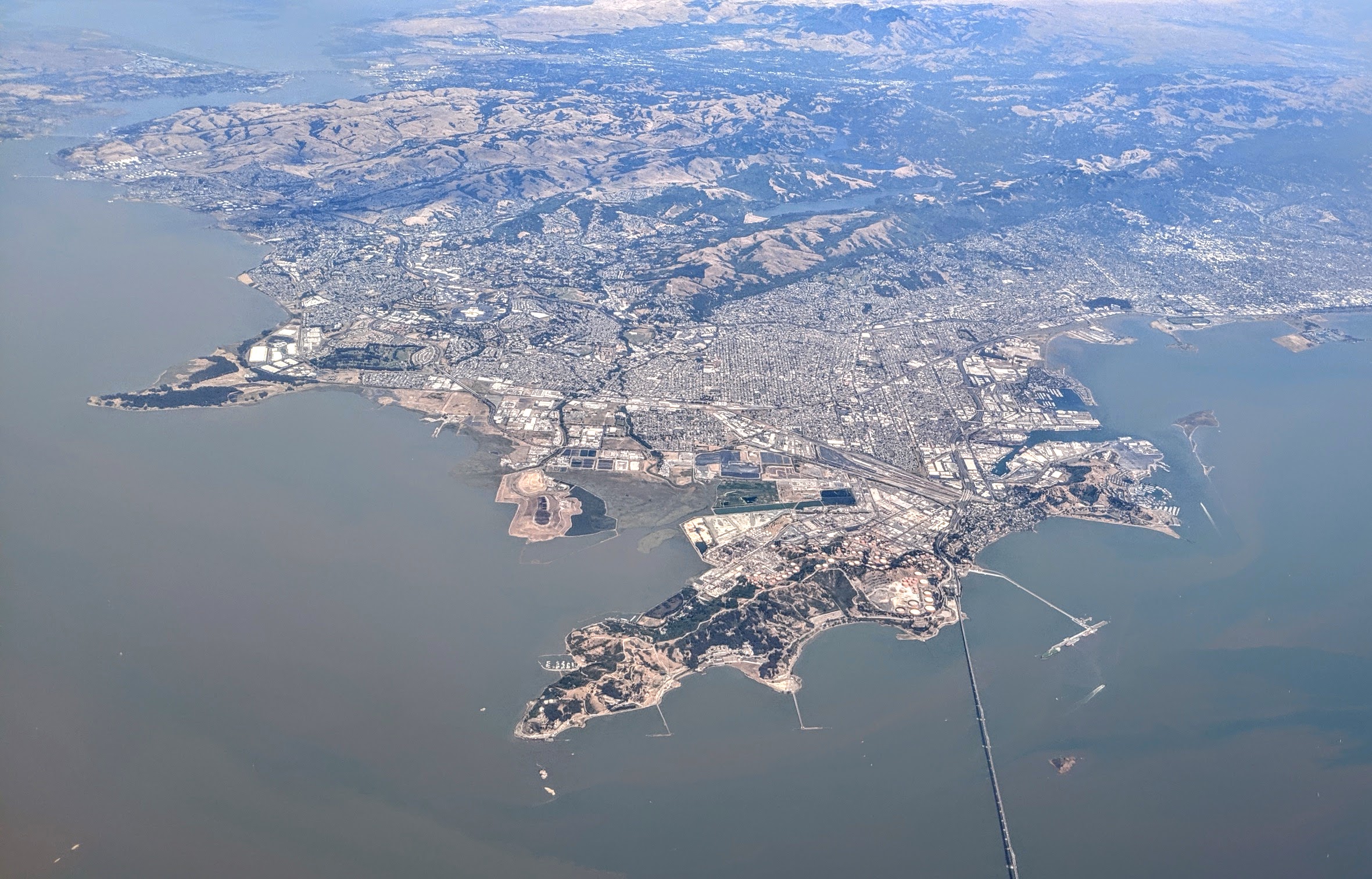Monitoring Results
Our region’s wetlands are inextricably linked to their surrounding human communities. One of the WRMP’s Guiding Questions is: How do projects to protect and restore tidal marshes affect public health, safety and recreation? To answer this, the WRMP measures how people interact with and benefit from tidal wetlands.
Nearly eight million people live in the San Francisco Bay Area, and they all interact with and benefit from the Estuary in some way, from enjoying the views, touching its cool waters on a warm day, to fishing at its shorelines. The Estuary’s tidal wetlands protect the communities that surround them by reducing flood risk, improving water quality, and supporting healthy fisheries. Data on human-wetland connections can inform the funding, design and adaptive management of wetland projects to best meet our region’s needs and maximize the benefits people get from wetlands.
Challenge & Response
Public support and investment in tidal wetland restoration require that projects benefit both the Estuary’s natural and built human communities. In order to maintain public support and ensure that projects achieve desired outcomes for communities, it is important to monitor and convey the benefits wetland restoration has on flood risk reduction, shoreline stability, water quality, public health (including mosquito abatement), public access and recreation, and aesthetics. One or more of these benefits are often cited as part of the justification for tidal wetland restoration.
The People & Wetlands (P&W) Workgroup identified priority management and monitoring questions about human connections to wetlands, and has begun collecting, synthesizing, and visualizing data to better understand how local communities interact with and benefit from wetland restoration. The Workgroup formed in 2022 to develop the WRMP’s human dimensions monitoring. Human dimensions indicators are intended to monitor social aspects of wetlands, such as how people are benefiting from wetlands or involved in wetland stewardship.
Science Framework
These questions help resource managers understand the interactions between people and wetlands to make informed decisions that benefit human life, health, and infrastructure.
- What mosquito and vector control strategies need to be considered in restoration design and management to understand the effects that restoration can have on mosquito and vector populations?, What monitoring data and/or analyses are needed to improve the relationships between tidal marsh restoration, fish and wildlife support, mosquito and vector control, and public access?, How does the provision of benefits (such as flood risk reduction, water quality, public access, opportunities for community stewardship, knowledge production & transmission, and cultural & spiritual experiences) progress over time at existing and restored wetland sites?
Key Metrics & Figures
People and Wetlands (P&W) is a broad category that considers everything from public health to infrastructure, and the metrics used to measure these are also broad, from the number of people using certain wetlands, to how decisions about wetland restoration are made, to better understanding managing mosquitoes in wetlands.
Looking for local data and information?
Metrics describe how the WRMP conducts science to better understand and monitor the Estuary’s tidal wetlands, like water quality, fish habitat, wetland condition, and benefits to humans. Explore all the WRMP’s metrics, which aim to guide wetland management and restoration.
How We Monitor
The People & Wetlands Workgroup is composed of experts in social sciences, wetland restoration and management, urban planning, Indigenous and local knowledge, and more. They are developing data collection methods.
1
- What organizations make decisions about different aspects of wetland restoration?
- How do people in wetland decision-making groups perceive the process of decision-making?
2
- Organizational perspective of decision-makers.
- Satisfaction with levels of access to and influence on decision-making.
- Open-response data on suggested improvements to the process of decision-making.
3
- Regionally through a targeted survey, distributed in meetings and by email to wetland management decision-makers.
We measure human dimensions indicators to track the interactions between people and wetlands.
Our human dimensions work includes better understanding the processes of wetland decision making, and a targeted survey was developed by the WRMP’s People & Wetlands Workgroup to understand what organizations are involved in various aspects of decision making about wetland restoration and adaptive management (including funding, permitting, project implementation, expert advisory input, and monitoring). For those involved in specific decision making groups, the survey also includes questions about the level of access to and influence on decision making that group members feel they have. The survey is distributed to people in groups that work on wetland restoration and management at a regional scale in the Bay and Delta. Data collection will repeat every 3-5 years to track change over time. The results will enable more effective decision making processes that maximize participation in wetland restoration and management.
The WRMP is mapping the benefits that wetlands provide to communities around San Francisco Bay, including flood risk reduction and access to recreational opportunities. Given the current absence of robust and consistent data on community benefits provided by wetland restoration projects, this dashboard will be a starting point for addressing one of the People and Wetlands management questions: How are the benefits of wetlands distributed regionally? This map is intended to serve as a resource that provides context to supporters of wetland/shoreline restoration and enhancement projects and informs decision-making about future restoration and management to optimize the benefits wetlands provide to local communities.
